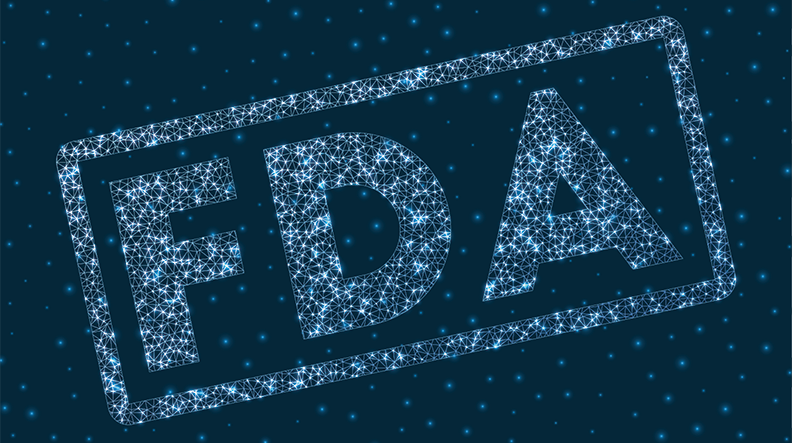
We checked in on the Canaccord Genuity 2024 Musculoskeletal Conference, held last week in San Francisco, to put our fingers on the pulse of innovation in orthopedics. The single-day meeting was packed with presentations from forward-thinking companies that provide a sense of what’s next in joint and spine care. These five emerging offerings in the market aim to solve the significant burden of osteoarthritis, address degenerative disc disease (DDD) and improve spine surgery outcomes.
Doron Therapeutics
The company’s MOTYS product is an intra-articular biologic drug derived from placental tissue that delivers growth factors with anti-inflammatory and regenerative capabilities to treat degenerative joint osteoarthritis. “Our goal is to not just manage joint pain, but also to restore joint mobility,” said Alessandra Pavesio, the company’s CEO. “We firmly believe that mobility is a precious gift.”
Osteoarthritis is a complex disease that requires complex treatment, Pavesio noted. “Mother Nature has provided us with a tissue that can unpack the key elements of tissue regeneration and inflammation by providing an anti-inflammatory effect,” she said.
In vitro and in vivo data provide concrete evidence that MOTYS effectively impacts the progression of osteoarthritis, according to Pavesio. The product’s anti-inflammatory, anti-catabolic and pro-anabolic effects manage pain and inflammation and actively mitigate cartilage degeneration. Pavesio said that supplementary evidence indicates an increase in cartilage formation, attributed to interactions with stabilizing sites in the joint.
“When considering these findings collectively, particularly in relevant animal models, the product exhibits not only pain-relieving effects but also significant preservation of cartilage,” she added.
Osteoarthritis is the largest and fastest-growing disability worldwide that consumes the majority of healthcare resources, according to Pavesio. She noted that current treatment options are less than ideal.
Oral therapeutics offer a limited duration of effect and carry significant side effects. Total joint replacement isn’t a viable option for all patients who suffer from osteoarthritis. Steroids provide short-term relief but can damage joint cartilage. Hyaluronic acid, while cartilage-friendly, is limited in potency and acceptance due to variability.
Pavesio said localized injectable therapies manage osteoarthritis symptoms and slow the disease progression, and biologics show promise as the fastest-growing component in the spectrum of injectable therapies. However, she noted, biologics are limited in use due to variability inherent in bedside preparations and reimbursement barriers — a crucial factor in treating a large patient population.
“We wanted to develop a product that surpasses steroids in durability and tissue protection, exceeds the potency of hyaluronic acid and offers greater consistency and affordability than off-the-shelf biologics,” Pavesio said. “Seamlessly integrating the product into clinical practice could significantly delay disease progression and reduce healthcare costs.”
Doron Therapeutics seeks to raise $18 million to fund MOTYS’ first phase III study.
Kuros Biosciences
The company’s goal is to introduce innovative biological fusion technologies into the spine segment. “The market remains substantial and continues to grow across various segments,” said Chris Fair, CEO. “This growth is a positive indicator, although challenges persist, particularly concerning pseudarthrosis rates and high spine fusion revision rates.”
Recent clinical studies have highlighted the influence that a patient’s immune system has on fusion rates and emphasized the importance of quickly transitioning from the inflammatory phase to the healing phase, according to Fair. “Macrophages, as the first responders of the immune system, play a pivotal role in this process,” he said. “Optimizing the surface topography of bone graft materials can promote a pro-healing environment, thereby enhancing the efficacy of bone grafting procedures.”
The company’s MagnetOs bone graft and NeedleGrip technology are designed to expedite the healing response. “This evolution in bone graft material, from flat to fine granular surfaces, underscores the strides we’ve made in optimizing bone grafting techniques,” Fair said.
The proprietary NeedleGrip technology demonstrates osteoinductive properties, according to Fair. That claim is valid outside the U.S. but has not yet been recognized by FDA.
“Internationally, we can classify the product as an osteoinductive synthetic bone material, indicating its ability to stimulate bone and soft tissue growth,” he said. “No other synthetic material has shown the ability to induce bone growth within soft tissue. This success can be attributed to the unique NeedleGrip surface technology incorporated into our bone graft.”
Kuros Biosciences has adapted the technology into diverse applications, including granules, putties and a flexible matrix. The company is currently focused on the spine space, in which MagnetOs has been used in 25,000 procedures worldwide.
Kuros Biosciences is committed to generating and supporting level 1 evidence for its products. The company’s MAXA clinical trial, which was conducted last December, focused on the use of granules during posterior lateral fusion, considered one of the most challenging fusion procedures for the lumbar spine. Results of the study indicated a substantially high fusion rate in a large real-world representation of patients, including smokers and ex-smokers. The findings demonstrated the unique osteoinductive and fusion properties of MagnetOs, according to Fair.
The product recently received FDA 510(k) clearance for interbody use, expanding the product portfolio and addressing a broader market segment within spine.
Kuros Biosciences’ revenue has grown significantly over the past year, according to Fair.
“With adequate financial resources secured beyond 4Q24, we are well-positioned for sustained growth and innovation in the spine biologics market,” he said. “We are making significant strides in addressing the spine marketplace with proven products backed by robust clinical evidence, and our journey of growth continues to be exciting and promising.”
Cerapedics
CEO Valeska Schroeder, Ph.D., said that patients with DDD who are treated with opioids, off-label injections and extended conservative therapies often end up undergoing spine fusion surgery. However, these procedures yield unsatisfactory outcomes in a considerable percentage of cases, particularly among high-risk patients, such as those with diabetes, obesity, smoking habits or oncological conditions.
“We aim to augment outcomes by strategically deploying biologics to facilitate fusion at critical junctures, thereby reducing the risks of complications like pseudarthrosis and non-union to ultimately enhance long-term outcomes for all patients,” Dr. Schroeder said.
She noted that bone graft surgery represents $2.6 billion in annual healthcare expenditures and highlighted the opportunity to introduce differentiated biologic treatments for DDD. “We want to redefine the standard of care for bone repair by facilitating improved patient outcomes and enabling physicians to efficiently treat a broader patient base,” she added.
Cerapedics’ first product, i-FACTOR, received Premarket Approval in 2015 for use in anterior cervical discectomy and fusion (ACDF) procedures in patients with DDD. The product’s mechanism of action centers on the P-15 peptide and has demonstrated superiority over autografts in clinical trials with a fusion rate of 97% and an excellent safety profile.
Dr. Schroeder said Cerapedics boasts $100 million in annual revenue and is focused on four key areas for future growth: continued investments in commercial infrastructure, the launch of a next-generation product, disrupting the existing bone graft market and exploring additional indications outside of spine.
“We are actively engaged in market access initiatives and collaborate with payors, hospitals and group purchasing organizations to ensure widespread availability of our products,” she said.
Cerapedics is investing in laying the groundwork for the imminent launch of a new differentiated product that uses the P15 peptide with a new form factor that targets an indication in the lumbar spine.
“The lumbar spine presents a significant market opportunity due to its higher procedural volume, necessitating increased bone graft usage,” Dr. Schroeder said. “Our new product addresses this demand, offering improved handling characteristics and enhanced potential for P-15 efficacy. Clinical trials, such as the ASPIRE study, have been instrumental in evaluating the product’s efficacy and safety with promising results so far.”
DiscGenics
DiscGenics is a privately-held clinical-stage biopharmaceutical company focused on developing an allogeneic injectable disc cell therapy, known as IDCT, for the treatment of lumbar DDD. The company’s target patient population comprises 2.5 million individuals annually.
“Our phase I/phase II study showed that a single injection of IDCT possesses regenerative capabilities, offering the potential to address the underlying pathophysiology of DDD by reducing inflammation and restoring disk architecture,” said Flagg Flanagan, CEO and Chairman. “Consequently, we received a Fast Track designation in 2019 and a Regenerative Medicine Advanced Therapy designation in early 2023, underscoring the promising therapeutic potential of our approach.”
Flanagan said the prevalence of lumbar DDD underscores the urgent need for effective treatment options, with millions of patients worldwide suffering from debilitating symptoms. He added that traditional treatments, such as fusion and artificial disc replacement, often yield suboptimal outcomes, emphasizing the critical need for innovative therapeutic approaches.
“IDCT represents a paradigm shift in the management of lumbar DDD by offering a biologic solution aimed at halting disease progression and promoting tissue regeneration from within,” Flanagan said. “Our therapy harnesses a live progenitor cell population derived from donated adult human intervertebral disc tissue, optimized and maximized for potency through careful culturing and conditioning.”
DiscGenics has also identified a novel allogeneic cell platform with enhanced collagen production to address cartilage defects and other musculoskeletal conditions, according to Flanagan. He said ongoing research aims to optimize delivery platforms to maximize efficacy across diverse musculoskeletal indications.
“To fuel our continued growth and innovation, we are in the process of raising funds through a series D crossover, with an anticipated investment of $95 to $125 million,” he said. “This funding will support our phase III trials and further advance our mission of revolutionizing regenerative medicine.”
BONESUPPORT
BONESUPPORT is a fast-growing orthobiologics company thanks to the success of CERAMENT, a synthetic bone graft platform that fills unmet clinical needs in the U.S. market related to bone remodeling and infection management. CERAMENT bone void filler is the sole synthetic bone graft in the U.S. that’s authorized to carry an antibiotic elution into the surgical wound space.
“We are the only company to conduct a level I randomized clinical trial on bone remodeling, demonstrating equivalent healing outcomes to autografts,” said Emil Billback, CEO. “Moreover, our CERAMENT product, combined with antibiotics, offers ease of use for surgeons and remarkable rates of infection eradication rates, limb salvaging and reduced amputation rates, as supported by clinical evidence. With such solid documentation and unique product offerings, we anticipate maintaining our leading position in the U.S. market for the foreseeable future.”
BONESUPPORT developed a health economic model that leveraged existing data within the U.S. healthcare system to demonstrate cost reductions for insurance companies, patients and hospitals associated with the use of CERAMENT.
“Our findings showed that treatment with CEREMENT G — an injectable synthetic bone void filler consisting of 40% hydroxyapatite, 60% calcium sulfate and the antibiotic gentamicin sulfate — is $28,000 cheaper than the current standard of care over two years,” Billback said. “This not only leads to improved patient outcomes, but also significant health economic effects, which are of great importance to payors.”
Billback said the company’s technology demonstrates robust bone remodeling and effective antibiotic delivery to injury sites, indicating it can also greatly benefit patients with spinal issues.
“Spinal fusion stands out as a major procedure in spine treatments and considering the success of our product in building bone in extremities, we have initiated steps toward spinal fusion applications,” he added. “Initially, we’ll introduce our base product without antibiotics, followed by a version containing antibiotics in the second phase.”
BONESUPPORT is accelerating and expanding its business with a reported 85% topline growth and a gross margin of 92%. The company has conducted more than 240 peer-reviewed clinical studies and holds full MDR CE certification for its entire product portfolio.
DC
Dan Cook is a Senior Editor at ORTHOWORLD. He develops content focused on important industry trends, top thought leaders and innovative technologies.




